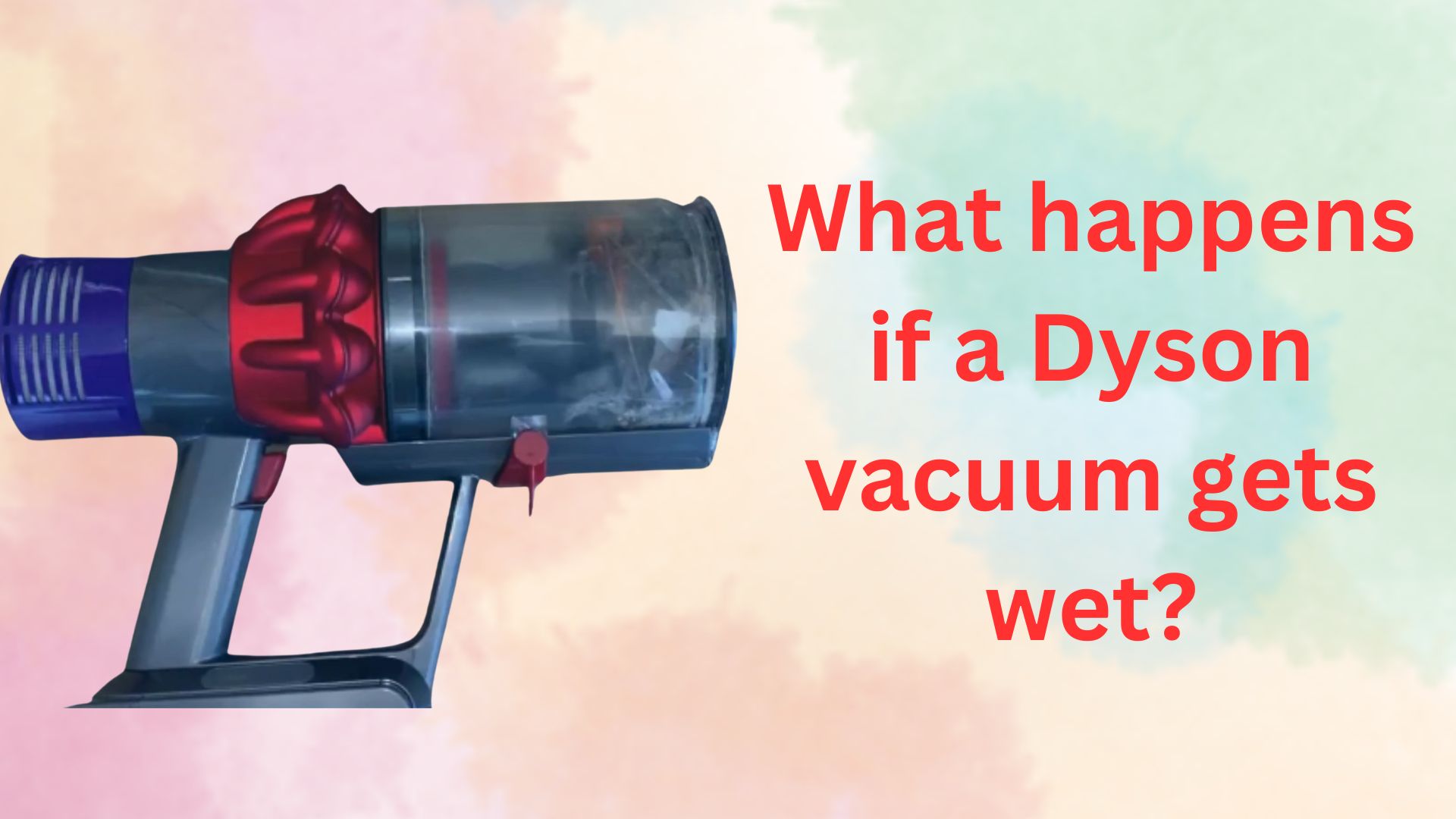You can suck up a few droplets without causing severe harm. Although, the water will make a mess in the bag and chamber. It could kill the appliance, not to mention electrocuting the user.
If you’ve owned a Dyson vacuum for years, you’re probably wondering how people make these devices wet. It isn’t always intentional. Some people vacuum puddles of water by accident.
The internet is filled with stories of people that unknowingly vacuumed wet carpets. This is why experts warn homeowners against vacuuming carelessly in kitchens, bathrooms, basements, and other wet and damp locations.
The filter is probably the most common culprit. You should clean a Dyson vacuum filter at least once a month to extend the device’s lifespan. The process is relatively straightforward:
- Place the filter under a tap with running cold water and rub it with your hands. Be gentle. You don’t want to harm it. Stay away from detergents. The cold water is sufficient.
- Fill the filter with warm water before covering both ends with your hands and shaking the component firmly. Repeat this process until the water clears.
This Dyson guide has diagrams showing you how to clean a filter. But why is this dangerous? Some people reinstall the filter without drying it. A wet filter is just as hazardous as vacuuming a puddle of water.
What Happens If Dyson Vacuum Gets Wet?
You can expect the following:
1). The water can create blockages in the tube and filter. This is because it makes the dirt and grime in the vacuum wet. Vacuuming more dust will make the mess bigger and moldier until the machine stops working.
2). Water can cause a short circuit, damaging the motor and making the Dyson vacuum unusable. Don’t be surprised if the vacuum refuses to start.
3). Dyson vacuums are not airtight. If you suck up large volumes of water, the water will leak, making a mess in your home, especially when it mixes with the dust to make mud.
4). You can’t ignore the mess in the vacuum. It will make cleaning the vacuum a challenge, especially when the water mixes with the dirt. It will complicate the maintenance process.
Water is not always a threat to vacuums. Some vacuums are specifically designed to suck up water. The key is to match each vacuum to the right task. Check your manual to determine whether it is compatible with water.
What Should I Do If Dyson Vacuum Gets Wet?
If you accidentally exposed your Dyson vacuum to water, don’t panic. The following solutions will prevent a bad situation from becoming even worse:
1). Stop using the vacuum. Even if you only sucked up a few drops of water, don’t take any chances. Those droplets can run through the vacuum’s system to reach the motor. The last thing you want is to buy a new motor.
Even if the motor survives, what if the vacuum electrocutes you? Shut the device down and pull the plug out of the outlet to protect yourself.
2). Take the Dyson vacuum apart. This step makes some laypeople nervous because they’ve never disassembled an electrical appliance. But if you follow the instructions in the manual, it will show you how to unclip the various components without harming the device.
Spread the vacuum’s components out on newspaper sheets. Leave them to dry overnight. Naturally, this step only works if the location is warm and dry. Otherwise, mold may become an issue.
3). If you forgot to dry the filter but have yet to use the Dyson vacuum, remove the filter and let it dry. You should only take the vacuum apart if you force the appliance to work after installing the wet filter.
When you wash the filter, let it dry for 24 hours. You don’t need a hair dryer. Leave the filter in a warm location with decent airflow. Don’t position it under direct sunlight.
4). If the motor dies, get a new one. Talk to Dyson’s customer support team. Ask them to send you a replacement. The market has too many low-quality motors. A recommendation from Dyson is safe. Laypeople rarely fix dead motors.
Although, that shouldn’t stop you from hiring a technician and asking them to inspect the motor. They may identify a cheaper solution.
5). Speaking of replacements, don’t hesitate to replace a worn-out filter. If the vacuum is dry, but the appliance isn’t as efficient as you remember, get a new filter, especially if you’ve had the old filter for two or more years. Follow the instructions when you install the filter.
6). Clogging is a difficult challenge to overcome. It isn’t enough to remove and clean the filter. You must inspect the brush bar and wand. There’s also the inlet to consider. Keep cleaning until the air can flow freely through these components.
7). If you’ve disassembled the vacuum and unclogged the individual components, but the moisture has seemingly persisted, use a hair dryer. Hair dryers will expedite the drying process. They will also give you peace of mind. You can reassemble the machine, knowing for sure that every component is bone dry.
8). If your model has a vacuum bag, replace it. Wringing the water out and drying the bag is not enough. The dampness may attract mold in the long run. Get a new one. They are relatively inexpensive.
Again, if you need to suck up water, get a wet/dry vacuum. These models can tolerate liquids without malfunctioning.
Liquids are not your only concern. Keep conventional Dyson vacuums away from sharp objects like glass, sawdust, sticky substances like glue and syrup, ash, and small things like coins and pins.

